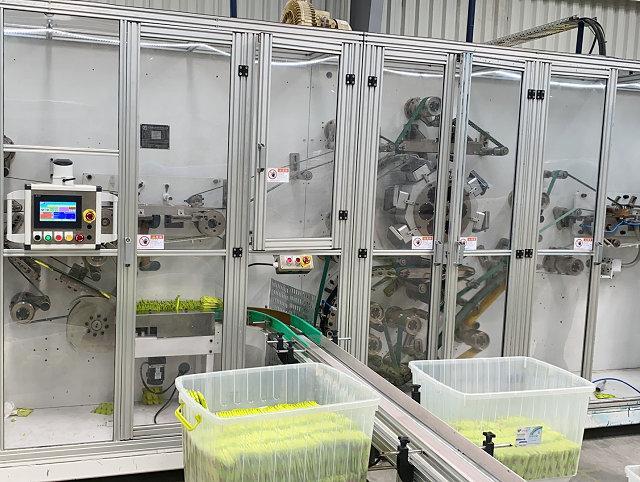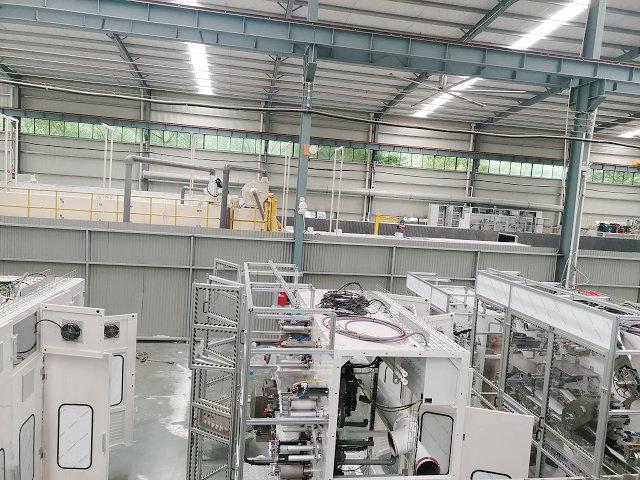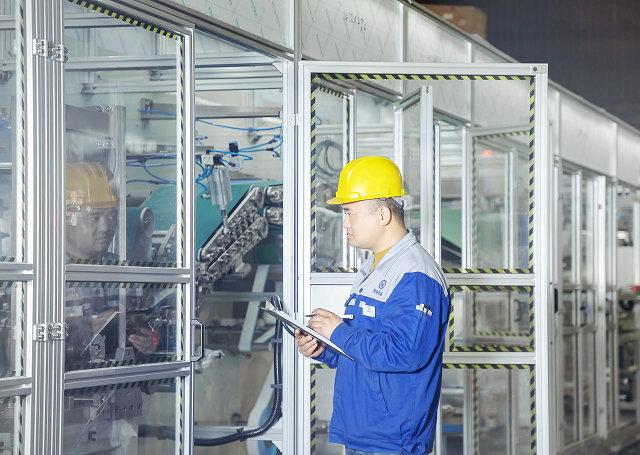Author:Haina Machinery Factory FROM:Diaper Machinery Manufacturer TIME:2023-08-04
Introduction:
Maintenance Guide for Nappy Making MachineThe nappy making industry plays a vital role in meeting the hygiene needs of infants and toddlers worldwide. To ensure the smooth operation of nappy making machines, proper maintenance is crucial. This comprehensive guide aims to provide valuable insights into the maintenance procedures for nappy making machines, ensuring optimal performance and prolonging the lifespan of the equipment.

Regular cleaning and lubrication are essential for maintaining the efficiency and functionality of nappy making machines. Firstly, it is important to clean the machine thoroughly after each production run. Remove any residual materials or debris from the machine, paying special attention to critical components such as cutters, rollers, and forming molds. Use appropriate cleaning agents and ensure that all parts are dry before proceeding.
Lubrication is another vital aspect of machine maintenance. Proper lubrication prevents friction and wear, facilitating smoother operation and reducing the risk of breakdowns. Refer to the manufacturer's guidelines to identify the specific lubricants suitable for each component. Apply lubricants to the designated areas regularly, following the recommended schedule. Avoid over-lubrication, as this can lead to accumulation of debris and may cause operational issues.

Routine inspections and adjustments are necessary to address any potential issues and maintain optimal performance. Conduct visual inspections to identify signs of wear, damage, or misalignment. Check belts, chains, gears, and other mechanical parts for any signs of excessive wear or fatigue. Replace any worn-out or damaged parts promptly to prevent further damage to the machine.
In addition to visual inspections, regular checks for tension, alignment, and calibration are imperative. Ensure that all mechanical and electrical components are properly aligned and functioning correctly. Adjust any loose or misaligned parts, such as tensioning devices or feeders, to avoid production errors or machine malfunctions. Calibrate sensors, timers, and other control mechanisms as per the manufacturer's instructions, ensuring accurate operation.

Operator knowledge and training are crucial for the effective maintenance of nappy making machines. Operators should receive comprehensive training on machine operations, maintenance procedures, and troubleshooting techniques. By understanding how the machine works and being familiar with potential issues, operators can take necessary preventive measures and address minor problems before they escalate.
Encourage operators to report any abnormalities immediately to the maintenance personnel or supervisors. Proactive communication between operators and maintenance staff facilitates quick response times and prevents prolonged downtime. Regular training sessions and refresher courses should be conducted to keep operators updated with the latest maintenance practices and technological advancements.
Conclusion:
In conclusion, proper maintenance of nappy making machines is essential to ensure smooth operations and maximize efficiency. Regular cleaning, lubrication, inspections, adjustments, and adequate operator training are key factors in maintaining these machines effectively. By following this maintenance guide, manufacturers in the nappy making industry can minimize downtime, reduce repair costs, and ultimately deliver high-quality nappies to meet the growing demand for hygiene products.
